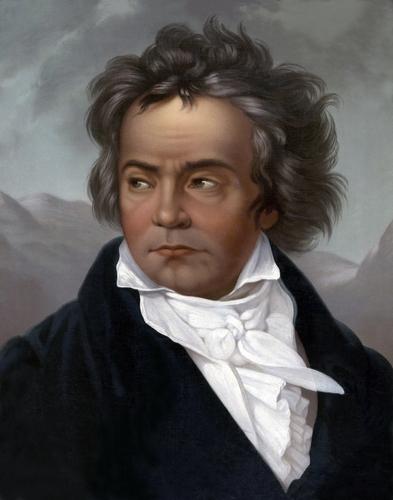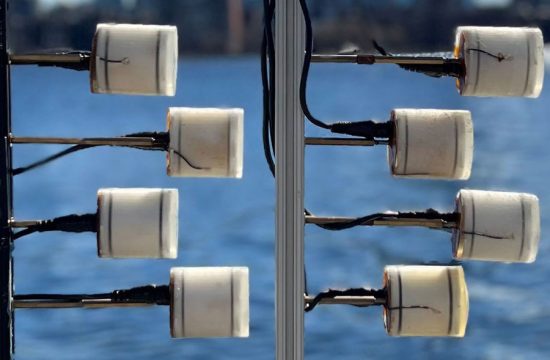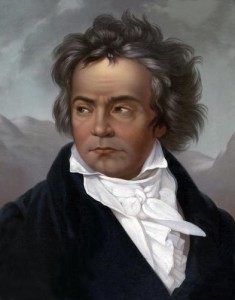
Does the music we play come from the music of our bodies—at work?
Recent research on Ludwig von Beethoven says: likely.
Zachary Goldberger made newspaper headlines in the mid-1990s as a student, when he conjured music out of heartbeats with his Harvard Medical School electrophysiologist father Ary; made a CD of them; and built an exhibit related to them at the Museum of Science. (The CD is still found on Amazon.)
Now a cardiologist at Washington University, the younger Goldberger has published a headline-grabbing paper on a related topic, this time with a Beethoven scholar and a medical historian. The trio have found three Beethoven compositions, forged during stressful times in the composer’s life, to be arrhythmic in a way that mirrors his own probable arrhythmias, or premature ventricular contractions (PVCs).
The paper has captured the imagination of musicians and medical types alike.
It is “excellent, well-balanced and refers to relevant literature,” emeritus University Hospital Bonn Department of Cardiology and Medicine chief Berndt Luedertiz told Bioscience Technology.
Luderitz, an arrythmologist who invented many pacemakers, has written on the topic. The new paper adds much to the idea that some of our music comes from rhythms we “hear” inside, he said—if, ironically, “this might be particularly in deaf composers like Beethoven and Smetana.”
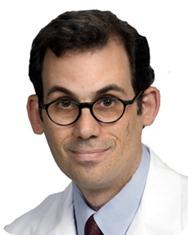
“Long before Einthoven recorded heartbeats through graphic representation of their electric potentials, or EKGs, Beethoven expressed them in musical notes,” George Washington University cardiologist Tsung Cheng told Bioscience Technology. (Willem Einthoven, a Dutch doctor and physiologist, invented the first practical electrocardiogram in 1903 and received the Nobel Prize in (Medicine in 1924.) Cheng has also written about the topic. He, too, believes music can evolve out of internal rhythms, although he is a “maybe” on whether the deaf “hear” them better. As for Goldberger, he says that “of course” he thinks the music of our bodies informs the music of our brains, he told Bioscience Technology. But the degreeto which musical genius comes from internal “music”—let alone from internal flaws like PVCs and deafness—is unsettled.
“Part of Beethoven’s genius, his sublimity, was to overcome adversity and transcend limitations with his art,” Goldberger said. “This paper presents a speculation, and may offer a new dimension by which one can attend to Beethoven, as well as other works of music. We are listening to his music with a stethoscope. We invite the reader-listeners to approach these works with open minds and open ears, and form their own opinions. Most important is simply to listen to the music, which speaks for itself, and for all of us, in ways that need no translation (nor an ECG).”
Music as “overture” to medicine
Music was the “‘overture’ to my career path into medicine,” Goldberger said. He grew up studying classical piano, and had published two albums of solo piano compositions by the time he entered Brown University in 1994. One album was “Heartsongs: Musical Mappings of the Heartbeat,” by the Museum of Science, Harvard investigators and Boston University.
“We were able to translate the cardiac interbeat interval fluctuations—derived from Holter monitoring in both healthy subjects and those with heart disease—into music,” Goldberger toldBioscience Technology. “The intervals were translated into numerical sequences which were then mapped onto the musical scale. The rise and fall of the melody (of which I had no control)—not the rhythm—reflects these interbeat intervals.”
What did they find?
“The variation in healthy hearts produced a very complex, variable melody line,” Goldberger said. “Patients with severe cardiac disease (heart failure with reduced ejection fraction) yielded a melody line that was more monotonous in range and dynamics. A ‘heartsong’ from a healthy subject will sound slightly different than one from a patient with heart failure.”
That early connection between music and heartbeats “sparked my interest in medicine, and influenced my decision to become a cardiologist.”
The new Beethoven study
Music lovers have long wondered if some of Beethoven’s best came straight out of a cardiology text. An autopsy found no significant structural disease, “but many of the tools we now use to examine the heart at autopsy were not available in the early 19th century,” the Goldberger trio wrote. “Cardiovascular disease could have been manifest in cardiac arrhythmias: abnormal, irregular rhythms of the heartbeat. These speculations cannot be proved with certainty—indeed, the electrocardiogram was not part of routine clinical practice until well into the 20th century—but a possible diagnostic tool may be provided in Beethoven’s music.”
Many, including Luderitz and Cheng, have found indirect evidence of abnormal heart rhythms in Beethoven works. Goldberger’s team found historical context for some of these—including war rumblings and the abandonment of a patron’s support. They found much to back up “the notion that Beethoven may have been reflecting his own physical sensations in his compositions—in other words, that he was, in a sense, setting an arrhythmia to music,” they reported.
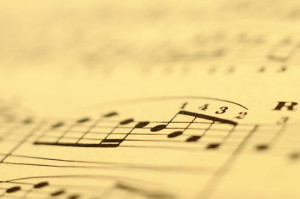 Specifically, “musicologists, medical historians, and cardiologists” have speculated that “distinct rhythmic motifs in the opening of Piano Sonata in E-flat major (Opus 81a) were `transpositions’ of premature ventricular beats,” Goldberger told Bioscience Technology. “Our paper segues off this previous notion and attempts to amplify it by identifying other Beethoven works, which include ‘arrhythmic’ tempi. Was the composer mapping his own electrophysiologic dynamics onto musical scores? We reexamined Opus 81a to see why others felt that it was a direct arrhythmic transposition. Then we studied other works where ‘arrhythmia’ may be manifest: we examined the 5th movement (Cavatina) of the String Quartet in B-flat major (Opus 130) composed in 1825, and Piano Sonata in A-flat major (Opus 110) composed in 1821. We found that there may indeed be, in these works, a possible manifestation of an arrhythmia.”
Specifically, “musicologists, medical historians, and cardiologists” have speculated that “distinct rhythmic motifs in the opening of Piano Sonata in E-flat major (Opus 81a) were `transpositions’ of premature ventricular beats,” Goldberger told Bioscience Technology. “Our paper segues off this previous notion and attempts to amplify it by identifying other Beethoven works, which include ‘arrhythmic’ tempi. Was the composer mapping his own electrophysiologic dynamics onto musical scores? We reexamined Opus 81a to see why others felt that it was a direct arrhythmic transposition. Then we studied other works where ‘arrhythmia’ may be manifest: we examined the 5th movement (Cavatina) of the String Quartet in B-flat major (Opus 130) composed in 1825, and Piano Sonata in A-flat major (Opus 110) composed in 1821. We found that there may indeed be, in these works, a possible manifestation of an arrhythmia.”
For example, in Opus 130, there is a breathlessness characteristic of arrhythmias. And in Opus 81a, “at both tempos, the rhythmic pattern seems to register a physical symptom of psychological distress, namely slow irregular heartbeats (in the Adagio), then racing irregular heartbeats (in the Allegro),” the team reported. “This rhythmic profile has been ascribed to premature ventricular complexes (PVCs). Such extrasystoles can be felt as early beats, or as skipped beats. In addition, a premature beat (or an ectopic beat) is often followed by a compensatory pause. We hear several such prominent pauses in the introduction to Opus 81a, as well as in the opening movement, often apparent after `syncopal’ phrasing.”
The trio reported numerous passages could outright be called “musical electrocardiograms.”
Organic musical electrocardiograms
Ludertiz cautions that such abnormalities constitute an “organic” rather than an “endogenous” influence.
“Were Beethoven’s arrhythmias coming from the endogenous rhythms inside all of us? I do not think so!” Luderitz told Bioscience Technology. “They are most probably due to organic heart disease. Beethoven was a heavy drinker. He consumed preferably punch with higher content of alcohol than wine or beer. It is very likely he suffered from alcoholic cardio-myopathy affecting the myocardium of the ventricles. The cardiac irregularities are eventually caused by ventricular premature beats.”
Ludertiz continued: “Beethoven’s autopsy revealed liver cirrhosis; his heart was not investigated. Lead poisoning or other intoxications, perhaps acquired in the cemetery of Vienna, which also affect the heart muscle could have played a role. Beethoven was well aware of his rhythm disturbances, and consequently he put them into music. But the primary cause was his diseased heart. His arrhythmias seem organically caused, not endogenously.”
Another heartsick composer: Mahler
Still, Ludertiz noted, plenty of music out there may have come from “endogenous” sources, just as much music may have emerged out of the maelstroms of illness— late-Romantic composer Gustav Mahler, for one.
“Mahler likely suffered from rheumatic heart disease with mitral valve pathology. This diagnosis was discovered incidentally by the physician who was tending to his wife in 1907 after the death of their daughter,” Goldberger told Bioscience Technology. That physician “heard a murmur, later confirmed by the famed Viennese cardiologist Friedrich Kovacs.” Still, while mitral stenosis, and consequent regurgitation, “may lead to atrial fibrillation, its relevance to Mahler’s compositions requires more investigation. As other have asked, does the opening of his 9th symphony actually have features reminiscent of rumbles and snaps?”
While potentially sending music lovers into a philosophical frenzy—do we create music, or does it create us? Is music pleasure, or pathology?—papers like Goldberger’s may prove a practical boon for medicine.


